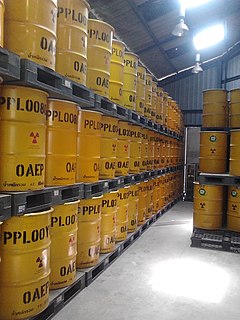 W
WRadioactive waste is a type of hazardous waste that contains radioactive material. Radioactive waste is a by-product of various nuclear technology processes. Industries generating radioactive waste include nuclear medicine, nuclear research, nuclear power, manufacturing, construction, coal and rare-earth mining, and nuclear weapons reprocessing. Radioactive waste is regulated by government agencies in order to protect human health and the environment.
 W
WA Blue Ribbon Commission on America's Nuclear Future was appointed by President Obama to look into future options for existing and future nuclear waste, following the ending of work on the incomplete Yucca Mountain Repository. At present there are 70 nuclear power plant sites where 65,000 tons of spent fuel is stored in the USA. Each year, more than 2,000 tons are added to this total. Nine states have "explicit moratoria on new nuclear power until a storage solution emerges". A deep geological repository seems to be the favored approach to storing nuclear waste.
 W
WThe Clab, also known as Centralt mellanlager för använt kärnbränsle is an interim radioactive waste repository located about 25 kilometers north of Oskarshamn Nuclear Power Plant and is owned by Oskarshamnsverkets Kraftgrupp AB (OKG), in Oskarshamn. It was opened in 1985 for the storage of spent nuclear fuel from all Swedish nuclear power plants. The fuel is stored for 30 to 40 years, in preparation for final storage.
 W
WA deep geological repository is a way of storing toxic or radioactive waste within a stable geologic environment. It entails a combination of waste form, waste package, engineered seals and geology that is suited to provide a high level of long-term isolation and containment without future maintenance. A number of mercury, cyanide and arsenic waste repositories are operating worldwide including Canada and Germany.
 W
WDry cask storage is a method of storing high-level radioactive waste, such as spent nuclear fuel that has already been cooled in the spent fuel pool for at least one year and often as much as ten years. Casks are typically steel cylinders that are either welded or bolted closed. The fuel rods inside are surrounded by inert gas. Ideally, the steel cylinder provides leak-tight containment of the spent fuel. Each cylinder is surrounded by additional steel, concrete, or other material to provide radiation shielding to workers and members of the public.
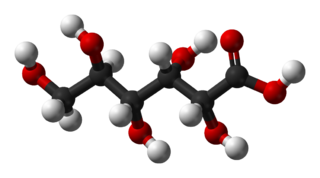 W
WGluconic acid is an organic compound with molecular formula C6H12O7 and condensed structural formula HOCH2(CHOH)4COOH. It is one of the 16 stereoisomers of 2,3,4,5,6-pentahydroxyhexanoic acid.
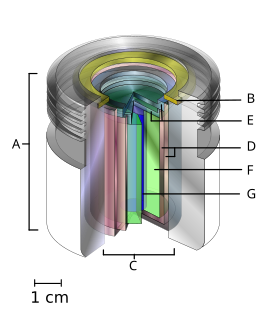 W
WThe Goiânia accident [ɡojˈjɐniɐ] was a radioactive contamination accident that occurred on September 13, 1987, in Goiânia, in the Brazilian state of Goiás, after a forgotten radiotherapy source was taken from an abandoned hospital site in the city. It was subsequently handled by many people, resulting in four deaths. About 112,000 people were examined for radioactive contamination and 249 of them were found to have been contaminated.
 W
WHigh-level waste (HLW) is a type of nuclear waste created by the reprocessing of spent nuclear fuel. It exists in two main forms:First and second cycle raffinate and other waste streams created by nuclear reprocessing. Waste formed by vitrification of liquid high-level waste.
 W
WInto Eternity is a feature documentary film directed by Danish director Michael Madsen, released in 2010. It follows the construction of the Onkalo waste repository at the Olkiluoto Nuclear Power Plant on the island of Olkiluoto, Finland. Director Michael Madsen questions Onkalo's intended eternal existence, addressing an audience in the remote future.
 W
WIsosaccharinic acid (ISA) is a six-carbon sugar acid which is formed by the action of calcium hydroxide on lactose and other carbohydrates. It is of interest because it may form in intermediate-level nuclear waste stores when cellulose is degraded by the calcium hydroxide in cements such as Portland cement. The calcium salt of the alpha form of ISA is very crystalline and quite insoluble in cold water, but in hot water it is soluble.
 W
WThe pit Konrad is a former iron ore mine proposed as a deep geological repository for medium- and low level radioactive waste in the city Salzgitter in the Metropolitan region Hannover-Braunschweig-Göttingen-Wolfsburg in southeast Lower Saxony, Germany, located between Hildesheim and Braunschweig. It has two shafts: Konrad I and Konrad II.
 W
WThe La Hague site is a nuclear fuel reprocessing plant at La Hague on the Cotentin Peninsula in northern France, with the Manche storage centre bordering on it. Operated by Orano, formerly AREVA, and prior to that COGEMA, La Hague has nearly half of the world's light water reactor spent nuclear fuel reprocessing capacity. It has been in operation since 1976, and has a capacity of about 1700 tonnes per year. It extracts plutonium which is then recycled into MOX fuel at the Marcoule site.
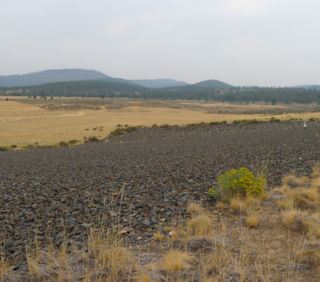 W
WThe Lakeview Mining Company was a uranium reduction plant 1.5 miles (2.4 km) north of Lakeview, Lake County, Oregon. The mill began operating in February 1958 and operating until November 1960. The site covered 258 acres (104 ha); 130,000 short tons (120,000 t) of ore were processed, leaving behind large amounts of residual radioactive material. These were moved to an engineered disposal cell in 1986-1988.
 W
WLow-level waste (LLW) is nuclear waste that does not fit into the categorical definitions for intermediate-level waste (ILW), high-level waste (HLW), spent nuclear fuel (SNF), transuranic waste (TRU), or certain byproduct materials known as 11e(2) wastes, such as uranium mill tailings. In essence, it is a definition by exclusion, and LLW is that category of radioactive wastes that do not fit into the other categories. If LLW is mixed with hazardous wastes, then it has a special status as mixed low-level waste (MLLW) and must satisfy treatment, storage, and disposal regulations both as LLW and as hazardous waste. While the bulk of LLW is not highly radioactive, the definition of LLW does not include references to its activity, and some LLW may be quite radioactive, as in the case of radioactive sources used in industry and medicine.
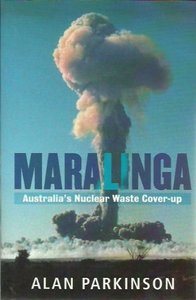 W
WMaralinga: Australia’s Nuclear Waste Cover-up is a book by Alan Parkinson about the clean-up of the British atomic bomb test site at Maralinga in South Australia, published in 2007. Parkinson, a nuclear engineer, explains that the clean-up of Maralinga in the late 1990s was compromised by cost-cutting and simply involved dumping hazardous radioactive debris in shallow holes in the ground. Parkinson states that "What was done at Maralinga was a cheap and nasty solution that wouldn't be adopted on white-fellas land."
 W
WThe National Commission for Radiation Protection of Ukraine (NCRPU) is a permanent independent collegial supreme scientific expert advisory and consultative body to the Verkhovna Rada on matters of radiation protection and radiation safety of Ukraine. Its composition is being coordinated through the National Academy of Sciences of Ukraine.
 W
WNuclear decommissioning is the process whereby a nuclear facility is dismantled to the point that it no longer requires measures for radiation protection. The presence of radioactive material necessitates processes that are potentially occupationally hazardous, expensive, time-intensive, and present environmental risks that must be addressed to ensure radioactive materials are either transported elsewhere for storage or stored on-site in a safe manner. The challenge in nuclear decommissioning is not just technical, but also economical and social.
 W
WA nuclear flask is a shipping container that is used to transport active nuclear materials between nuclear power station and spent fuel reprocessing facilities.
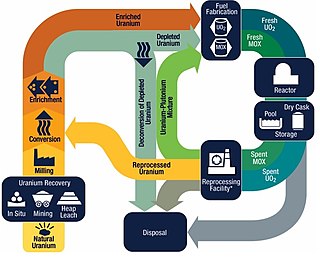 W
WThe nuclear fuel cycle, also called nuclear fuel chain, is the progression of nuclear fuel through a series of differing stages. It consists of steps in the front end, which are the preparation of the fuel, steps in the service period in which the fuel is used during reactor operation, and steps in the back end, which are necessary to safely manage, contain, and either reprocess or dispose of spent nuclear fuel. If spent fuel is not reprocessed, the fuel cycle is referred to as an open fuel cycle ; if the spent fuel is reprocessed, it is referred to as a closed fuel cycle.
 W
WNuclear Nebraska: The Remarkable Story of the Little County That Couldn’t Be Bought is a 2007 book by Susan Cragin which follows the controversy about a proposed low level nuclear waste dump, which was planned for Boyd County, Nebraska.
 W
WThe Nuclear Waste Management Organization (NWMO) of Canada was established in 2002 under the Nuclear Fuel Waste Act (NFWA) to investigate approaches for managing Canada’s used nuclear fuel. Currently, nuclear power plants are operating in Ontario and New Brunswick.
 W
WThe Nuclear Waste Policy Act of 1982 is a United States federal law which established a comprehensive national program for the safe, permanent disposal of highly radioactive wastes.
 W
WPhosphogypsum refers to the calcium sulfate hydrate formed as a by-product of the production of fertilizer from phosphate rock. It is mainly composed of gypsum (CaSO4·2H2O). Although gypsum is a widely used material in the construction industry, phosphogypsum is usually not used, but is stored indefinitely because of its weak radioactivity. The long-range storage is controversial. Somewhere between 100,000,000 and 280,000,000 tons are estimated to be produced annually as a consequence of the processing of phosphate rock for the production of phosphate fertilizers.
 W
WPondcrete is a mixture of cement and sludge. Its role is to immobilize hazardous waste and, in some cases, low-level and mixed-level radioactive waste, in the form of solid material. The material was used by the United States Department of Energy and its contractor, Rockwell International, in an attempt to handle the radioactive waste from contaminated ponds in the Rocky Flats Plant for burial in Nevada desert. Portland cement is mixed with sludge to solidify into “pondcrete” blocks and placed into large, plastic lined boxes. The sludge is taken from solar evaporation ponds which are used to remove moisture from waste materials, therefore reducing their weight. To do this, liquid waste is poured into artificial, shallow ponds. The waste is heated by solar radiation and any moisture is evaporated, leaving behind the waste. These ponds contained low level radioactive process waste as well as sanitary sewage sludge and wastes, which categorize them and the Pondcrete as a mixed waste.
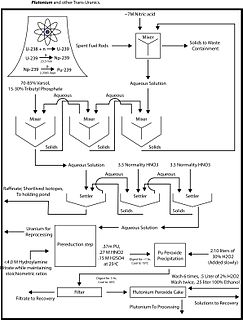 W
WPUREX is a chemical method used to purify fuel for nuclear reactors or nuclear weapons. PUREX is the de facto standard aqueous nuclear reprocessing method for the recovery of uranium and plutonium from used nuclear fuel. It is based on liquid–liquid extraction ion-exchange.
 W
WRadioactive contamination, also called radiological contamination, is the deposition of, or presence of radioactive substances on surfaces or within solids, liquids or gases, where their presence is unintended or undesirable.
 W
WThe Rocky Flats Plant was a U.S. manufacturing complex that produced nuclear weapons parts in the western United States, near Denver, Colorado. The facility's primary mission was the fabrication of plutonium pits, which were shipped to other facilities to be assembled into nuclear weapons. Operated from 1952 to 1992, the complex was under the control of the U.S. Atomic Energy Commission (AEC), succeeded by the Department of Energy (DOE) in 1977.
 W
WThe Schikorr reaction formally describes the conversion of the iron(II) hydroxide (Fe(OH)2) into iron(II,III) oxide (Fe3O4). This transformation reaction was first studied by Gerhard Schikorr. The global reaction follows:
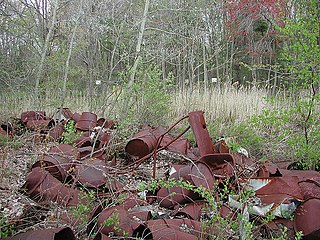 W
WShpack Landfill is a hazardous waste site in Norton, Massachusetts. After assessment by the United States Environmental Protection Agency (EPA) it was added to the National Priorities List in October 1986 for long-term remedial action. The site cleanup is directed by the federal Superfund program. The Superfund site covers 9.4 acres, mostly within Norton, with 3.4 acres in the adjoining city of Attleboro. The Norton site was operated as a landfill dump accepting domestic and industrial wastes, including low-level radioactive waste, between 1946 and 1965. The source of most of the radioactive waste, consisting of uranium and radium, was Metals and Controls Inc. which made enriched uranium fuel elements for the U.S. Navy under contract with the U.S. Atomic Energy Commission. Metals and Controls merged with Texas Instruments in 1959. The Shpack landfill operation was shut down by a court order in 1965.
 W
WM/S Sigyn was a ship that transported spent nuclear fuel and nuclear waste from Swedish nuclear power plants to Clab, the storage facility at Oskarshamn and the waste facilities at Studsvik and Forsmark. She was named after the goddess Sigyn, the mythological wife of Loki. Her name alluded to the rôle Sigyn played in holding a cup over the fettered Loki, catching the venom dripping from a viper perched above him.
 W
WA sodium-cooled fast reactor is a fast neutron reactor cooled by liquid sodium.
 W
WSpent fuel pools (SFP) are storage pools for spent fuel from nuclear reactors. They are typically 40 or more feet (12 m) deep, with the bottom 14 feet equipped with storage racks designed to hold fuel assemblies removed from reactors. A reactor's local pool is specially designed for the reactor in which the fuel was used and is situated at the reactor site. Such pools are used for immediate "cooling" of the fuel rods, which allows short-lived isotopes to decay and thus reduce the ionising radiation emanating from the rods. The water cools the fuel and provides radiological protection shielding from their radiation.
 W
WSpent nuclear fuel, occasionally called used nuclear fuel, is nuclear fuel that has been irradiated in a nuclear reactor. It is no longer useful in sustaining a nuclear reaction in an ordinary thermal reactor and depending on its point along the nuclear fuel cycle, it may have considerably different isotopic constituents.
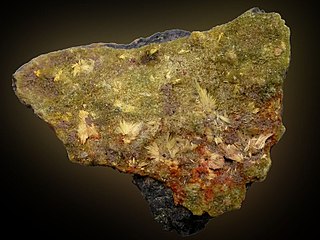 W
WStudtite, chemical formula [(UO2)O2(H2O)2]·2(H2O) or UO4·4(H2O), is a secondary uranium mineral containing peroxide formed by the alpha-radiolysis of water during formation. It occurs as pale yellow to white needle-like crystals often in acicular, white sprays.
 W
WThe Techa is an eastward river on the eastern flank of the southern Ural Mountains noted for its nuclear contamination. It is 243 kilometres (151 mi) long, and its basin covers 7,600 square kilometres (2,900 sq mi). It begins by the once secret nuclear-processing town of Ozyorsk about 80 kilometres (50 mi) northwest of Chelyabinsk and flows east then northeast to the small town of Dalmatovo to flow into the mid-part of the Iset, a tributary of the Tobol. Its basin is close to and north of the Miass, longer than these rivers apart from the Tobol.
 W
WTributyl phosphate, known commonly as TBP, is an organophosphorus compound with the chemical formula (CH3CH2CH2CH2O)3PO. This colourless, odorless liquid finds some applications as an extractant and a plasticizer. It is an ester of phosphoric acid with n-butanol.
 W
WThe Uranium Mill Tailings Radiation Control Act (1978) is a United States environmental law that amended the Atomic Energy Act of 1954 and authorized the Environmental Protection Agency to establish health and environmental standards for the stabilization, restoration, and disposal of uranium mill waste. Title 1 of the Act required the EPA to set environmental protection standards consistent with the Resource Conservation and Recovery Act, including groundwater protection limits; the Department of Energy to implement EPA standards and provide perpetual care for some sites; and the Nuclear Regulatory Commission to review cleanups and license sites to states or the DOE for perpetual care. Title 1 established a uranium mill remedial action program jointly funded by the federal government and the state. Title 1 of the Act also designated 22 inactive uranium mill sites for remediation, resulting in the containment of 40 million cubic yards of low-level radioactive material in UMTRCA Title 1 holding cells.